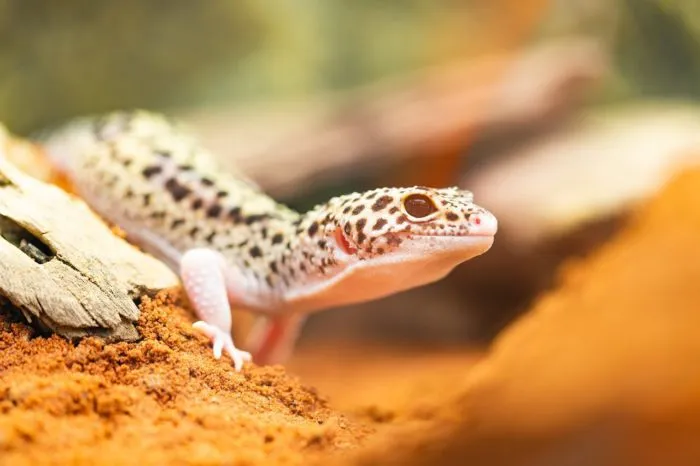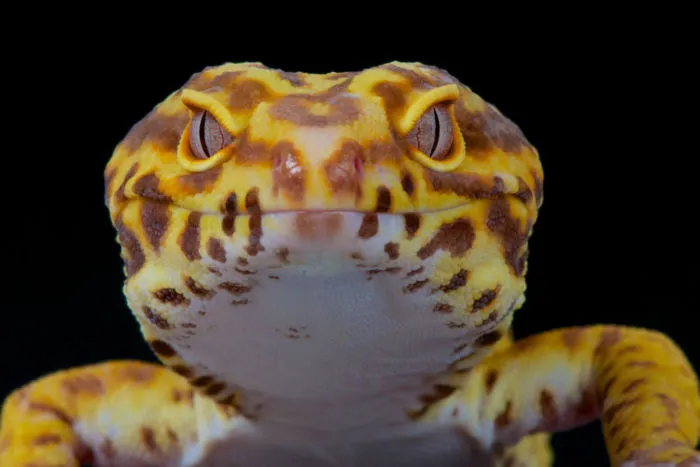 Why is my leopard gecko so small? You might be asking this question when you notice that one or two of your leopard geckos still look like the way they were when they first hatched. Is this occurrence normal? When should you worry?
Why is my leopard gecko so small? You might be asking this question when you notice that one or two of your leopard geckos still look like the way they were when they first hatched. Is this occurrence normal? When should you worry?
Definitely, there are a number of reasons as to why this is happening. Good thing, they also have some quick solutions.
Your leopard gecko is small due to three reasons. The first one is that he might be getting bullied by other geckos in the enclosure. Second is that there are nutritional issues. Lastly, there is a transfer of nutrients that hinder his growth due to tail reformation or disease recovery.
In this article, we are going to discuss these three main reasons and the factors that affect these reasons. More than that, we are also going to give you some tips and tricks on how to solve these issues.
Of course, these tips will not like be magic and be like, voila! your leopard gecko is already at par with the others in size. But with constant care, he will surely get there.
So read on to see how you can help your leopard gecko grow in size!
Table of Contents
Why Is My Leopard Gecko So Small? The Three Main Reasons
There are three main reasons as to why your leopard gecko is so small. It is a combination of their current environment, their diet, and other miscellaneous factors.
One thing to note about this is that, more often than not, having a small or thin leopard gecko is a huge sign that there is something wrong with him.
Of course, you should not panic when you see that you have a small leopard gecko, but if you notice that he is not growing in size or remains thin for a month, then that is indeed a cause for alarm.
He is either not getting all the nutrients that he needs or there is something seriously wrong with him or his enclosure.
Before you head out to your vet and bring unnecessary stress to your gecko, take a look at the following reasons first, as all you might need are some few adjustments here and there in taking care of him.
1. Getting Bullied
This is a common issue when housing several leopard geckos in one enclosure. The ideal set up is to not mix leopard geckos that have different sizes in one enclosure.
Further, it is better to house one male leopard gecko with a bunch of female leopard geckos, instead of housing male leopard geckos in one enclosure.
Even when you house a male leopard gecko with a bunch of females, there is still a chance that there will be bullying. By bullying we mean, fighting for
A lot of owners who tried to do an all-male leopard gecko set up have noticed that other bigger leopard geckos will not let the smaller leopard gecko drink from the bowl.
In the event that the smaller one finds a chance to drink water while the others are away, upon seeing him approach the bowl, the others will drive him away.
There is still no explanation as to why this is happening, but the fact is, this happens. Therefore, the smaller leopard gecko is just left to eating scraps and drinking from water droplets brought about by misting the enclosure.
Of course, these things are not enough to provide proper nourishment to his body. Which leads him to not grow in size.
More than that, he is constantly stressed and wary of his surroundings as the others might nip at him or harass him while he is resting. So he does not always get to rest properly. This will further add to his growth stunt.
We explain thoroughly why you should never get a partner for your Leopard gecko in this article – Read it here!
2. Nutritional Issues
More often than not, the biggest reason as to why your leopard gecko is so small is due to poor diet. Even though you are feeding him in time or even if his
Take a look at some other factors that contribute to nutritional issues.
Improper Diet
As leopard geckos are insectivores, they should be given a variety of waxworms , crickets, silkworms, butterworms, tomato hornworms, sowbugs, beetles, cockroaches, and mealworms. Keep in mind that mealworms should only be given in moderation.
Further, waxworms and superworms should only be given as a treat as they are high in fat. So if you have a small leopard gecko and you want to powerfeed him, giving him these two worms will help.
Take note that the keyword here is “variety,” which means that you should always change up their meals. Just like humans, we benefit from a variety of meals which in turn gives us our much needed daily nutrients.
We cannot just keep on eating chicken for a week and expect ourselves to be healthy, right?
The same thing goes with leopard geckos. As for the insects, they should be gut loaded for a minimum of 24 hours before you feed them to your gecko. If you have young geckos, the insects should also be coated with a calcium or Vitamin D3 supplement.
Improper Feeding
You might have given your leopard gecko fruits and vegetables which is a big no-no as their stomachs cannot properly process this
In such a case where you notice that a leopard gecko is being bullied and you still tried to feed him in the enclosure, he will definitely not eat properly. A good thing to do is to separate the bullied gecko and let him feed in a separate container.
Of course, put a bit of substrate and maybe a hide in the container to make him feel at ease.
Feeding at the right time is also important. When you feed them when they are not most active, it is highly likely that the live insects that you left in the enclosure may have hidden or escaped. So try to feed them when they are out and about to make sure that they get to eat.
Wrong Supplements
Calcium powder is important for your leopard gecko so that his bones can develop as this is a supplement to their much needed Vitamin D3 which they can get from sunlight. However, there are still other supplements that are needed by your gecko and this is a case to case basis.
For example, one gecko might need more calcium than the other or the other one needs more amino acids.
In order to be sure what type of supplement is needed, you have to take them to the vet. In turn, your vet will run some tests and will suggest the proper supplements to be dusted on the
Some Leopard geckos eat their own shed skin as we explain in this article here. This CAN also be a sign for a lack of nutrients.
3. Transfer Of Nutrients That Hinder Growth
This is a bit of a tricky situation as one cannot simply tell if this is happening. It is only upon closer examination or even a trip to the vet that you can be sure that this is the reason as to why your leopard gecko is small.
For this reason, you have nothing much to do but to wait it out and continue with feeding your gecko a proper diet.
Healing Of Tail
If your leopard gecko has dropped his tail recently and you noticed that his size/ growth declined, it may be due to the extra effort that he has been exerting to “repair” his tail.
His body signals all of the nutrients to be focused on the healing of the tail so they are not concentrated on building his body up.
If this is the case, then you have nothing to worry about. Once the tail is back, he will be back to his old self again and his body will start bulking up once again.
Recovery From Sickness
If you leopard gecko just went through disease or he just got rid of parasites in his body, then surely, he will look small for a while. His body is still recuperating and all the nutrients that he gets from
You should consistently check in with your vet if the recovery process is still ongoing to know if he needs supplements to make him recover faster. During this time, do not try to powerfeed your gecko as this will stress his body more.
Other Reasons
There can also be environmental factors as to why your leopard gecko is small. These reasons are usually related to the fact that he is unable to eat properly. Take a look at the following.
Cold Temperature
You might have left
Keep on maintaining the proper heat levels as leaving the
Dehydration
This is also the cause if you notice that your leopard gecko is refusing to eat. Always make sure that his water bowl is filled with fresh water. Further, the bowl should be shallow and he can easily drink from it. This prevents any stress and drowning.
- Enchi Ball Python: A Unique and Stunning Morph of Python regius - March 27, 2025
- Emerald Tree Monitor: The Enigmatic Green Guardian of the Rainforest - March 26, 2025
- The Egyptian Cobra (Naja haje): A Fascinating Serpent - March 25, 2025
